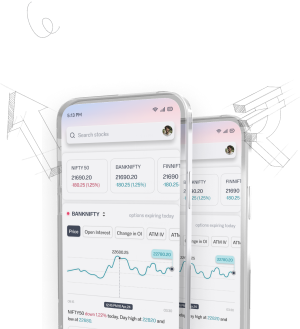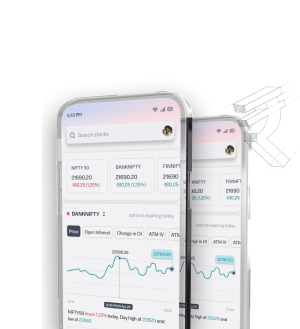Keltner Channels: Volatility Bands by Chester Keltner for Trends
Keltner Channels were designed by Chester W. Keltner in the late 1950s. They are channels that help traders envision the breadth of price action in financial markets. Keltner described these channels through his book, "How to Make Money in Commodities." The channels use the Average True Range to establish trends and shifts in direction. The following article will describe how Keltner Channels work. It will point out how they can improve our trading strategy. Keltner Channels are created with an exponential moving average and volatility, both very important in trend analysis and thus useful for traders who hold short and medium term positions.
Main Points
- Keltner Channels were designed by Chester W. Keltner in the late 1950s.
- The indicator identifies changing support and resistance levels with the help of the Average True Range.
- The exponential moving average (EMA) is usually the middle line.
- Keltner Channels help traders identify overbought and oversold market conditions.
- Keltner Channels are useful, especially when combined with other tools that can enhance trading strategies.
They are very useful for swing trading and momentum trading.
Introduction to Keltner Channels
Keltner Channels were first used in the 1960s by Chester W. Keltner. He discussed them in his book How to Make Money in Commodities. They are an important tool for technical analysis. At their core, they are based on a simple moving average with upper and lower bands around it.
These bands are based on the ATR. Therefore, Keltner Channels provide a good look at the market's movement.
Prices in the stock market can vary greatly. Keltner Channels allow us to be aware of price changes. For example, when a price goes above the upper band, it could mean that something huge is taking place. If it falls below the lower band, it might indicate weakness in the market.
The basic settings include a 20-day exponential moving average for the channels. The bands are two Average True Range values away from it. This helps see whether the market is too high or too low, especially in stable markets.
This will help us forge better trading plans and make the market more lucid.
We can choose to fill the channel with color, which helps us see how prices change with volatility. We can also choose from different moving averages, such as Simple, Exponential, and Weighted, which allows us to adjust Keltner Channels to fit our trading needs.
How Keltner Channels Work: Understanding Their Volatility-Based Nature
Financial markets often experience price fluctuations, leading to difficulty in trading. The Keltner Channel assists in showing the extent of market movement. It contains three trend lines: the middle line, the upper band, and the lower band. These lines aid in finding trends and managing risks.
Most traders use a 20-day or 50-day simple moving average in the middle, while some traders use an exponential moving average because it responds better. The upper band is the middle line plus a certain ATR; the lower band is the middle line minus the ATR. This would help us recognize big price changes, which might indicate a shift in the market.
When prices hit or cross these lines, we can see if the market is rising or falling. If they continue to rise above the upper band, it normally indicates that the market is very strong and rising. If they fall below the lower band, it probably becomes a time to be cautious. These signs help the traders make good decisions. The Keltner Channels are useful in stock markets and many other financial markets, including cryptocurrencies and Forex. The Keltner Channels offer traders a clear view of how much the market is moving up and down. This helps in making smarter trading decisions.
Making Keltner Channels
The Keltner Channels are very important in technical analysis. They include three parts: a middle line, an upper band, and a lower band. All the components are useful in understanding trends and price changes.
Parts of Keltner Channels
The middle line consists of the exponential moving average over 20 periods. The bands are ATR-based: one is the upper ATR band, and the other is the lower ATR band.
The upper band is above the EMA and placed at twice the ATR, whereas the lower band is below the EMA and at twice the ATR. This setup shows how the market changes.
How to Calculate the Average True Range ATR
The average true range is just the average price difference over some time period. It tells the value of market volatility. The ATR multiplier determines how sensitive the channels will be to prices.
To tune the strategy, one can change the EMA period and the ATR multiplier. This helps tailor trading to one's needs and the market.
Setting up Keltner Channels involves finding a fine balance between the EMA and the ATR. The combination helps us see trends and guess price changes. Understanding these parts helps us make better trading choices.
Trading with Keltner Channels
Keltner Channels help us understand the market easily. They indicate the price of a currency pair, whether too high or too low, helping us devise wise trading moves.
Identifying Overbought and Oversold Conditions
The price above the upper Keltner Channel line indicates overbought conditions, suggesting that prices will likely go down again soon. Prices are oversold when they drop below the lower line. In such situations, traders should thus wait for a price bounce back.
Following these levels will help us identify changes in the market.
Speaking Keltner Channels to Learn a Trend
Keltner Channels help us understand the market trend. They compare price movement to a middle line, which is an EMA. If prices are above the EMA, the trend is going up. If they are below, the trend is going down.
This information helps us align our trades with how the market is moving.
| Condition | Market Signal | Action |
|---|---|---|
| Above Upper Band | Overbought | A trader should consider selling or closing a long position |
| Price below Lower Line | Oversold | Consider buying or closing a short position |
| Price above Middle Line | Uptrend | Look for long entry points |
| Price Below Middle Band | Downtrend | Look to stay on the sell side |
| Fluctuates between Upper and Lower Lines | Range-bound | Price trends within the support and resistance levels |
We use Keltner Channels in the trading plan to observe when changes in the trend occur. It also shows where prices might pause or reverse. This churn supports our catching significant price movements and staying with the direction the market is headed.
Keltner Channels vs Bollinger Bands
Keltner Channels and Bollinger Bands are crucialcrucial roles in technical analysis because they help identify breakouts and reversals. Keltner Channels use moving averages and Average True Ranges (ATR), just like Bollinger Bands.
Keltner Channels react extremely swiftly to price changes within their very tight ranges. This, however, generates some strong buying and selling triggers in a choppy market. In the comparison test, Keltner Channels scored a 3, while Bollinger Bands achieved 2. This was in categories like trend and market turn detection.
Keltner Channels are good at discerning trends and breakouts, while Bollinger Bands are good at pointing out reversals and reducing noise. The moving average length in Keltner Channels can make the signals come quickly. A bigger ATR multiplier would make the channels wider and more adaptive to changes in the market, which is only fair.
Keltner Channels provide a good view of strong trends when prices reach outer bands, again giving traders early notice to change positions on a good trading day. Bollinger Bands have helped in handling large price gap areas since they indicate only 5% of prices will go outside the bands when set to 2 standard deviations.
| Feature | Keltner Channels | Bollinger Bands |
|---|---|---|
| Calculation Basis | Average True Range and Exponential Moving Averages | Standard Deviations |
| Sensitivity to Price Movements | High in tight channels | Moderate, better in ranging markets |
| Market Trend Signals | Early signals for trends and breakouts | Cost-effective in signaling reversals |
| Effectiveness in Choppy Markets | May provide exaggerated signals | Filters noise effectively |
| Performance Score (Out of 5) | 3 | 2 |
Making this choice depends on our trading situations and strategies: understanding what each indicator does will improve our trades.
Keltner Channels and Donchian Channels
Looking at the trading indicators, I found the two are different. Both Keltner Channels and Donchian Channels help guide our analysis and trading strategies. The indicators started around the same time but are programmatically different and give different signals.
Comparing Different Building Methods
Keltner Channels: These were developed by Chester Keltner in the 1960s and modified by Linda Raschke. Limiter/Channels around the Average True Range. It uses a 20-period EMA as the middle line with the bands above and below the EMA by a certain ATR factor. Donchian Channels are easier to understand. They check the highest price and the lowest price over 20 time periods. This helps to see price ranges and where to find breakouts. Keltner Channels change with how much the market moves, but Donchian Channels stay the same based on past prices.
Trading Signal Comparison
The Keltner Channels indicate a sell or buy depending on when prices move beyond the channel lines. This tells traders when to act. It helps us understand price changes and market trends.
When prices shift above the upper band or below the lower band, the Donchian Channels indicate strong moves or shifts of prices in any direction. Both signal opportunities to trade, but the differences help traders make better choices.
Knowing these differences helps us forge better trading plans. We could use the best associations of Keltner Channel and Donchian Channel to handle the market's challenges.
Advantages and Disadvantages of Keltner Channels
The Keltner Channels with the trading community is a specific technical analysis tool. Based on the advantages and disadvantages, a good conception helps us apply the tool judiciously in our trading strategies.
Advantages for Traders
Keltner Channels have many advantages. They offer solid performance in various market conditions, making it easy to change strategies depending on how much the market moves. They also show us how prices are changing, making it easy to pinpoint good times to buy or sell.
This strengthens our trading plans, mainly when we check for the strength of a trend and search for breakouts. The average true range (ATR) is used to decide the width of the channel, however, and helps us notice when the market is quiet or active.
What Not to Do
Keltner channels have some nice features, but they also have their own problems. One of the big problems is that they will provide false signals when the market is quiet, and such an action may lead to bad trading decisions. They perform badly in uncertain markets, and no firm direction can be realized.
They are lagging indicators, meaning that they show what has happened instead of what will happen. Hence, it is necessary to verify them with other tools to see if they are correct. With these problems understood, we can use Keltner Channels to greater advantage in our trade plans.
Day Trading Plans using Keltner Channels
Keltner Channels are important for day traders to visualize rapid price changes. They use a middle EMA and upper and lower bands based on ATR. Using these bands helps us figure out the best time to buy or sell. One good strategy is to buy when prices go above the upper band or sell when they go below the lower band. When prices change significantly, this works well in the first 30 minutes of trading. This gives Keltner Channels power when showing us the direction of the trend.
The multipliers that can be adjusted are those used in the ATR. The ATR multiplier is usually 2, yet in other assets, we might try 1.7 or 2.3. Keltner Channels look much smoother than Bollinger Bands, which gives us clear signals without additional noise.
Here's a quick look at how Keltner Channels compare to regular trading strategies:
| Strategy | Keltner Channel Application | Entry/Exit Signals | Success Rate |
|---|---|---|---|
| Trend Following | - Good trade selection | - Smooth | |
| Breakout Strategy | Buy above upper band; Sell short below lower band | Price crosses upper/lower bands | Approx. 80% |
| Trend-Pullback Strategy | Align entries with breakout guidelines | Re-entries after pullbacks | Dependent on practice |
| Mean Reversion Strategy | Buy below lower band; Sell above 'typical price' | Price retreats from extreme bands | Varies by asset |
| Scalping | Short term trades based on quick moves | Pullbacks back toward the middle line | Depends on market |
Using Keltner Channels in our day trading helps us respond quickly to market changes. By practising with these tools, we will improve our trading and find opportunities more accurately.
Use of Keltner Channels in Your Trading Plan
Adding Keltner Channels to our trade plan makes market trends more visible. It helps in enhancing our trading decisions. Below are some tips on using Keltner Channels for more successful trading:
How to Apply It
- Test it over past data to understand how it works and find excellent points to buy or sell.
- Set stop-loss orders when the channel breaks to lower risk and manage trades more effectively.
- Use the Keltner Channels with other tools, such as the ADX, to get superior trading signals.
- Scroll through different time frames to find the one that fits best our trading style, especially for day traders.
Examples of Good Trades
Many people have thus far made good trades using Keltner Channels. For instance, buying when the price exceeds the top channel line can make a lot of money. Of course, this is done with very careful risk management. Another good strategy is the pullback approach. This would mean starting trades when the prices return to the middle line during trends. This way, we can change our trading plans with real information from Keltner Channels.
Conclusion
The Keltner Channels are essential to watch as a trader when looking for the change in the market: the major all-important price trend. The ability to work with this tool helps us outline improved trading plans and zero in on key market signals. The good thing about these channels is that they are simple and can easily adapt to our trading style. These will be equipped with the 20-day Exponential Moving Average and Average True Range multipliers. That helps us see when the market is too high or too low, making better trading decisions. It helps us to make good use of Keltner Channels when putting our trading plan together. We monitor the market closely for any adjustments to strategies. Hence, the instrument aids us in understanding fast-changing market conditions and finding ways and methods to earn from it.
FAQ
What are Keltner Channels?
Keltner Channels are great for showing traders trends and reversals in the stock market. They sport a middle line that is an EMA (Exponential Moving Average), and the upper and lower bands show how much prices are changing with the ATR (Average True Range).
How do we incorporate Keltner Channels into our trading strategies?
We look at price changes near the upper and lower bands of Keltner Channels. If prices reach these bands, it could mean the market is too high or too low. Knowing when to buy or sell can help us decide. Also, knowing where prices are about the EMA helps us decide on our trading actions.
How do Keltner Channels differ from Bollinger Bands?
Keltner Channels and Bollinger Bands both show how prices change. However, Keltner Channels use the Average True Range (ATR), while Bollinger Bands uses price standard deviations. This means each indicator provides different information for trading.
What are the advantages of using Keltner Channels?
Keltner Channels are useful in various market conditions and help us understand price movement. They indicate where to start or stop a trade, improving the quality of trading plans.
Any limitations one should be aware of when using Keltner Channels?
Keltner Channels can definitely give false signals in volatile markets. It is better to use the indicator with other indicators for better confirmation. Understanding their limits helps us make more intelligent trades.
Disclaimer
The content provided is for educational purposes only and does not constitute financial advice. For full details, refer to the disclaimer document.




